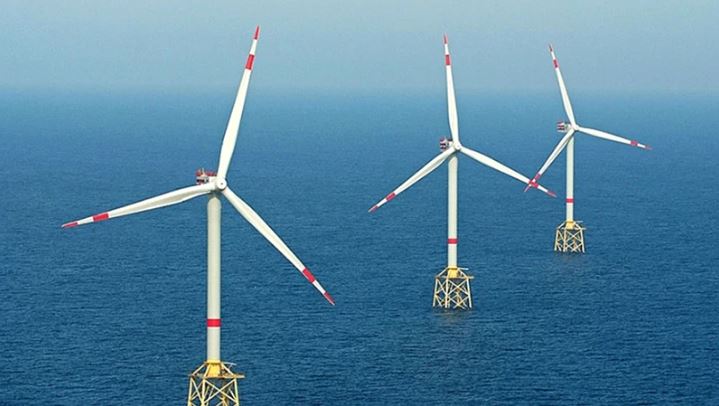The time to develop and build an offshore wind farm typically takes 6-7 years, with the first 3-4 years dedicated to completing the project and securing financing, followed by at least 3 years for construction. Therefore, to achieve the target, the first projects need to be launched within the next one or two years.

Offshore wind power helps Vietnam meet domestic electricity needs while opening up export opportunities
Potential opportunities
"Vietnam has offshore wind potential of over 600GW, and many investors are interested in developing projects.
This could be an opportunity for our country to lead Southeast Asia (ASEAN) in promoting the development of marine industries and services and aiming to export offshore wind power to ASEAN and neighboring countries," said Dr. Du Van Toan.
According to the World Bank (WB), Vietnam has the technical potential of nearly 600GW of offshore wind power in its nearshore waters. Vietnam's total power sources currently amount to 80GW, primarily consist hydropower, coal-fired thermal power, gas turbines, solar power, onshore wind, and nearshore wind.
Among these, hydropower resources are gradually depleting, and coal resources are insufficient to sustain the operation of existing coal power plants. Therefore, with the offshore wind potential being many times larger than the current capacity, it will meet both present and future electricity needs while positioning Vietnam as one of the five major offshore wind power hubs in Southeast Asia, alongside Northern Europe, the US, East Asia, and South America.
A breakthrough mechanism needed
According to Bruno Jaspaert, Chairman of the European Chamber of Commerce in Vietnam (Euro Cham), Vietnam needs to finalize the legal framework for offshore wind quickly, establish clear support mechanisms, and ensure the rights of all parties involved.
Tran Ho Bac, General Director of the Vietnam Oil and Gas Technical Services Corporation (PTSC), affirmed that all countries go through three stages in offshore wind development.
The first stage is the pilot phase, where the government will guarantee the entire project duration, set a baseline profit level, define a pilot scale to assess potential, design projects suitable for the marine area, and evaluate environmental impacts.
The second phase is the conditional development phase, where the government provides support, guarantees for a specific period, and price support. The third stage is the development phase, where price bidding is organized.
In addition, it is necessary to consider localization policies, as other countries have. "With the offshore wind technical services supply chain, countries worldwide require localization rates to enhance the capacity and scientific-technological level of the host country. Therefore, to develop domestic capacity, localization policies for offshore wind need to be legislated," emphasized Tran Ho Bac.
The amended Law on Electricity, passed by the National Assembly and will take effect from February 1, 2025, has covered major policies such as power planning, electricity markets, and renewable energy development, adding many provisions to address long-standing bottlenecks. However, to promote the development of offshore wind projects to meet expectations, a comprehensive approach needs to be implemented, including amendments and additions to related laws such as Environmental Protection, Investment, Bidding, Construction, and Land Laws. Additionally, developing the electricity market in line with the goals of the eighth power planning (Power Plan VIII) and expanding international cooperation, as well as learning from investment governance models in the energy sector, are crucial steps.
Translator: Thu Hường
Share